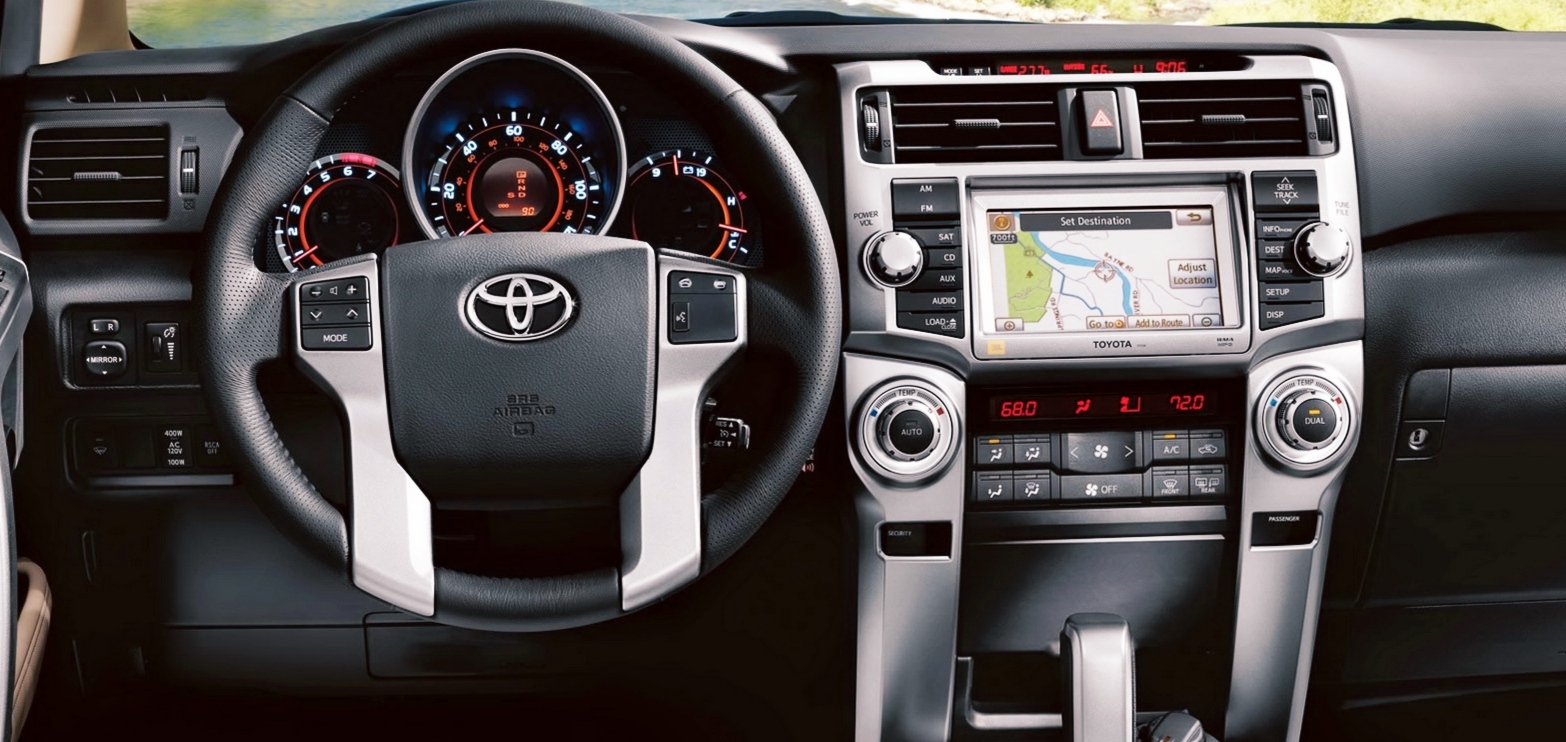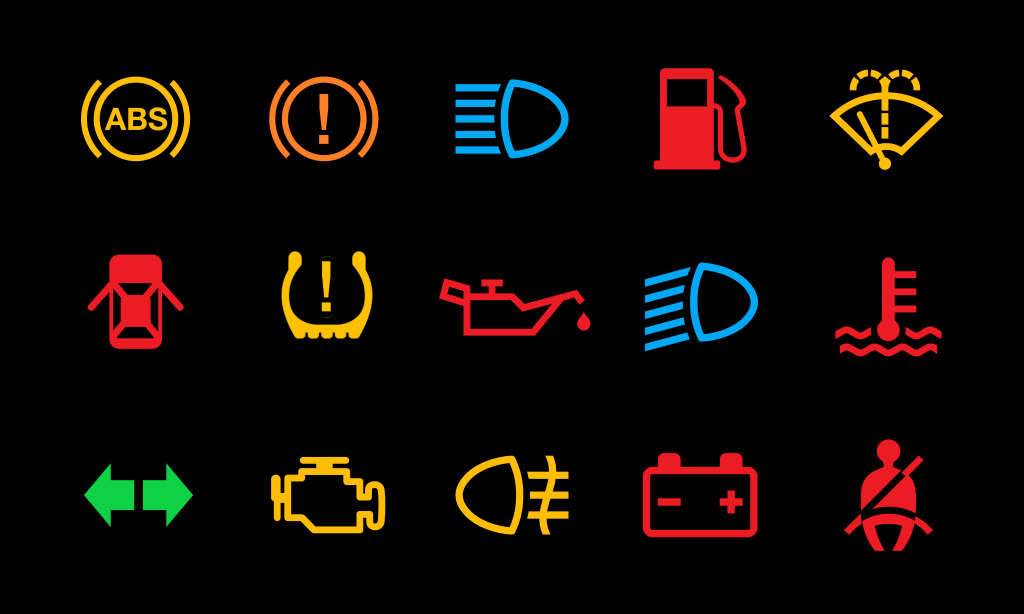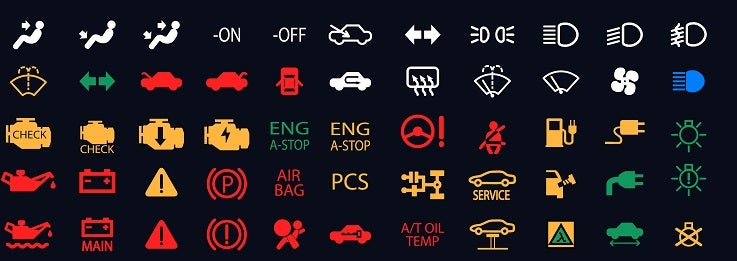Deciphering The Language Of Your 2025 Toyota 4Runner: Understanding Warning Lights
Deciphering the Language of Your 2025 Toyota 4Runner: Understanding Warning Lights
Related Articles: Deciphering the Language of Your 2025 Toyota 4Runner: Understanding Warning Lights
Introduction
With enthusiasm, let’s navigate through the intriguing topic related to Deciphering the Language of Your 2025 Toyota 4Runner: Understanding Warning Lights. Let’s weave interesting information and offer fresh perspectives to the readers.
Table of Content
Deciphering the Language of Your 2025 Toyota 4Runner: Understanding Warning Lights

The 2025 Toyota 4Runner, like any modern vehicle, is equipped with a comprehensive suite of warning lights designed to alert the driver to potential issues. These lights serve as crucial communication tools, providing vital information about the vehicle’s health and safety. Recognizing and understanding the meaning of these warning lights is essential for maintaining the longevity of your 4Runner and ensuring safe driving.
This article aims to demystify the various warning lights found on the 2025 4Runner, providing a comprehensive guide to their significance and potential causes. By understanding the language of these lights, drivers can proactively address potential problems, minimizing the risk of breakdowns and costly repairs.
Understanding the Warning Light System
The warning light system in the 2025 4Runner is a complex network of sensors and actuators that monitor various aspects of the vehicle’s operation. When a sensor detects an anomaly, it sends a signal to the vehicle’s computer, which then illuminates the corresponding warning light on the dashboard.
Types of Warning Lights
The 2025 4Runner’s warning lights can be broadly categorized into the following groups:
- Safety-Critical Warning Lights: These lights indicate immediate potential hazards requiring immediate attention. Examples include the ABS (Anti-lock Braking System) warning light, the Brake System warning light, the Airbag warning light, and the Traction Control warning light.
- Performance Warning Lights: These lights indicate potential issues affecting the vehicle’s performance and efficiency. Examples include the Engine warning light (Check Engine light), the Transmission warning light, the Tire Pressure Monitoring System (TPMS) warning light, and the Low Fuel warning light.
- Informational Warning Lights: These lights provide information about the vehicle’s status and do not necessarily indicate a problem. Examples include the High Beam warning light, the Door Ajar warning light, and the Seatbelt warning light.
Decoding the Warning Lights
Engine Warning Light (Check Engine Light): This light, often accompanied by a "Check Engine" message on the dashboard, signals a potential issue within the engine’s control system. Possible causes include:
- Malfunctioning Oxygen Sensor: This sensor monitors the exhaust gases and helps regulate fuel-air mixture. A faulty sensor can lead to poor fuel economy and increased emissions.
- Catalytic Converter Issues: This component converts harmful emissions into less harmful substances. A malfunctioning catalytic converter can trigger the warning light.
- Spark Plug Problems: Worn or faulty spark plugs can disrupt ignition and lead to engine misfires, triggering the warning light.
- Mass Airflow Sensor Failure: This sensor measures the amount of air entering the engine. A malfunctioning sensor can disrupt the air-fuel mixture and trigger the warning light.
Transmission Warning Light: This light indicates a potential issue with the transmission, such as:
- Low Transmission Fluid: Insufficient transmission fluid can cause overheating and damage to the transmission.
- Faulty Transmission Solenoid: These solenoids control fluid flow within the transmission. A malfunctioning solenoid can disrupt gear shifting.
- Clutch Problems: Worn or damaged clutches can lead to slipping gears and trigger the warning light.
ABS (Anti-lock Braking System) Warning Light: This light indicates a problem with the ABS system, which helps prevent wheel lockup during braking. Possible causes include:
- Faulty ABS Sensor: These sensors monitor wheel speed and send information to the ABS module. A malfunctioning sensor can disrupt the system’s operation.
- ABS Module Failure: This module controls the ABS system. A faulty module can lead to complete ABS system failure.
Brake System Warning Light: This light indicates a problem with the braking system, such as:
- Low Brake Fluid: Insufficient brake fluid can lead to reduced braking performance and potential brake failure.
- Faulty Brake Pad or Shoe Wear Sensor: These sensors monitor brake pad or shoe wear and trigger the warning light when the brakes need replacement.
- Faulty Brake Master Cylinder: This component controls brake fluid pressure. A faulty master cylinder can compromise braking effectiveness.
Airbag Warning Light: This light indicates a potential issue with the airbag system, such as:
- Faulty Airbag Sensor: These sensors detect impact and trigger the airbag deployment. A malfunctioning sensor can prevent the airbags from deploying properly.
- Airbag Control Module Failure: This module controls the airbag system. A faulty module can lead to complete airbag system failure.
Tire Pressure Monitoring System (TPMS) Warning Light: This light indicates that one or more tires are significantly underinflated. Possible causes include:
- Low Tire Pressure: Underinflated tires can lead to poor handling, reduced fuel efficiency, and increased wear and tear.
- Faulty TPMS Sensor: These sensors monitor tire pressure and send information to the TPMS module. A malfunctioning sensor can provide inaccurate readings.
Traction Control Warning Light: This light indicates a problem with the traction control system, which helps maintain traction on slippery surfaces. Possible causes include:
- Faulty Wheel Speed Sensor: These sensors monitor wheel speed and send information to the traction control module. A malfunctioning sensor can disrupt the system’s operation.
- Traction Control Module Failure: This module controls the traction control system. A faulty module can lead to complete traction control system failure.
Other Warning Lights:
- Battery Warning Light: This light indicates a problem with the battery, such as low charge or a faulty alternator.
- Oil Pressure Warning Light: This light indicates low oil pressure, which can cause engine damage if not addressed promptly.
- Temperature Warning Light: This light indicates that the engine is overheating.
- Power Steering Warning Light: This light indicates a problem with the power steering system.
- Immobilizer Warning Light: This light indicates a problem with the immobilizer system, which prevents the vehicle from starting without the correct key.
Addressing Warning Lights
When a warning light illuminates on your 2025 4Runner, it is crucial to take action promptly. Ignoring these signals can lead to further damage and potentially dangerous situations.
- Consult the Owner’s Manual: Your owner’s manual provides detailed information about each warning light and its potential causes.
- Contact a Toyota Dealership or Qualified Mechanic: If you are unsure about the cause of a warning light, it is best to contact a Toyota dealership or a qualified mechanic for diagnosis and repair.
- Do Not Ignore Warning Lights: Ignoring warning lights can lead to costly repairs and safety hazards.
FAQs
Q: What should I do if a warning light comes on while I am driving?
A: If a warning light comes on while you are driving, it is important to remain calm and assess the situation. If the warning light indicates a safety-critical issue, such as the brake system warning light or the airbag warning light, pull over safely and contact a Toyota dealership or qualified mechanic. If the warning light indicates a performance issue, such as the engine warning light or the transmission warning light, you can continue driving cautiously to a safe location and then contact a mechanic.
Q: What if a warning light comes on and then goes off?
A: Even if a warning light comes on and then goes off, it is still essential to have the vehicle inspected by a qualified mechanic. The light may have gone off temporarily but the underlying issue may still persist.
Q: What are the potential consequences of ignoring warning lights?
A: Ignoring warning lights can lead to a range of negative consequences, including:
- Increased risk of accidents: Ignoring safety-critical warning lights can lead to loss of control of the vehicle, increasing the risk of accidents.
- Costly repairs: Ignoring warning lights can allow minor issues to escalate into major problems, resulting in expensive repairs.
- Vehicle breakdown: Ignoring warning lights can lead to vehicle breakdowns, leaving you stranded and inconvenienced.
- Reduced vehicle lifespan: Ignoring warning lights can contribute to premature wear and tear, shortening the vehicle’s lifespan.
Tips for Maintaining Your 2025 4Runner
- Regular Maintenance: Adhering to the recommended maintenance schedule in your owner’s manual is crucial for preventing potential issues and ensuring your 4Runner’s longevity. This includes regular oil changes, tire rotations, and fluid checks.
- Use High-Quality Fluids: Using high-quality fluids, such as engine oil, brake fluid, and coolant, can help prevent premature wear and tear.
- Check Tire Pressure Regularly: Maintaining proper tire pressure is essential for optimal performance, fuel efficiency, and safety.
- Be Aware of Unusual Sounds or Odors: Pay attention to any unusual sounds or odors coming from your vehicle, as they may indicate a potential problem.
- Address Warning Lights Promptly: Do not ignore any warning lights that illuminate on your dashboard.
Conclusion
Understanding the warning lights on your 2025 Toyota 4Runner is essential for ensuring safe and reliable driving. By recognizing the meaning of these lights and taking prompt action when necessary, you can maintain the health of your vehicle and prevent costly repairs and potential safety hazards. Remember, these lights are designed to communicate with you, providing valuable information about your vehicle’s status. By paying attention to them and addressing any issues promptly, you can enjoy a safe and enjoyable driving experience in your 2025 4Runner for years to come.







Closure
Thus, we hope this article has provided valuable insights into Deciphering the Language of Your 2025 Toyota 4Runner: Understanding Warning Lights. We thank you for taking the time to read this article. See you in our next article!